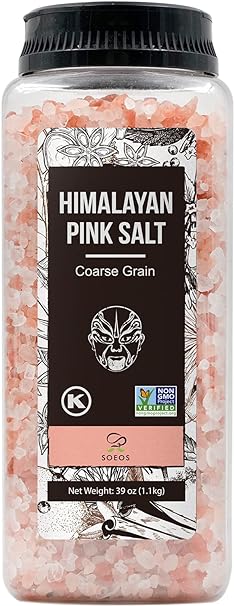Uncover the surprising health benefits of salt: essential for hydration, nerve function, and balancing electrolytes. Learn how moderate salt intake can support thyroid function, improve sleep quality, and maintain optimal health.
The Earth supplies abundantly for our needs. We might be the highest intelligence on the planet but we don’t have the largest population. We are outnumbered by microbes with estimated numbers of 4 quadrillion quadrillion.
Those microbes can make us sick at times. Did you know that salt has been used in ancient times to respond to incidents of illness. Have you ever noticed how animals will seek-out salt as a contributor to their own health and well being. Think of Deer and Salt licks.
We customarily do the same with our meal preparation.
Is Chicken Noodle Soup a favourite because of Salt? Salt is our #1 seasoning, it’s a food in the truest sense of the word; we could not survive without it. It has healing properties and supports our immune system. It kills microbes.
It is a vital substance and performs important functions in our bodies.
Salt contributes to body system regulation and elimination ensuring a healthy nutrient and water balance, regulating blood pressure and bone density.

Salt Cures Everything
Small scratches and wounds heal even faster in seawater salt. Unfortunately, swimming in the sea is not always a possibility, unless you have ocean front property. Of course, salt should not be applied to open wounds. The Salt in wounds proverb applies here. You can add sea salt to a bath though.
In today’s medicine, salt is still used in various fields. It can be used with respiratory diseases, as well as in metabolic disorders, lack of concentration, sleep disorders and skin diseases.

Here are a few tips on using salt to help with physical ailments:
Inhaling salt water vapour:
Inhaling salt water can help to open the airways and relieve inflammation in the nasal passages. Try, pouring 1 litre of hot water and approx. 2 or 3 teaspoons of salt (Best: Himalayan Sea salt medium coarse) into a pot or bowl, position your face over it and cover your head and the pot with a towel. Inhale for about 10 minutes.
Mouth Rinse and Gargle
For tooth ache or inflamed and bleeding gums, try a teaspoon of salt and a sip of filtered water then swish, gargle and spit it out. Repeat as you like. This can speed up the healing process.
Bladder Infections
Drinking a glass of water with a teaspoon of salt daily (recommended: Himalayan salt fine grained) on an empty stomach can help with digestive problems, allergies, colds and kidney and bladder infections. It also supports weight loss and improves the appearance of the skin. This is absolutely not recommended for people with high blood pressure though!

If you do have high blood pressure look into the benefits of a beet supplement. Also be sure to drink enough filtered water daily. This is especially true if you are sick and increase the salt in your diet for a time.
Salt is a vital part of your health care regimen. The latest scientific findings tells us that we need more salt than was previously recommended.




